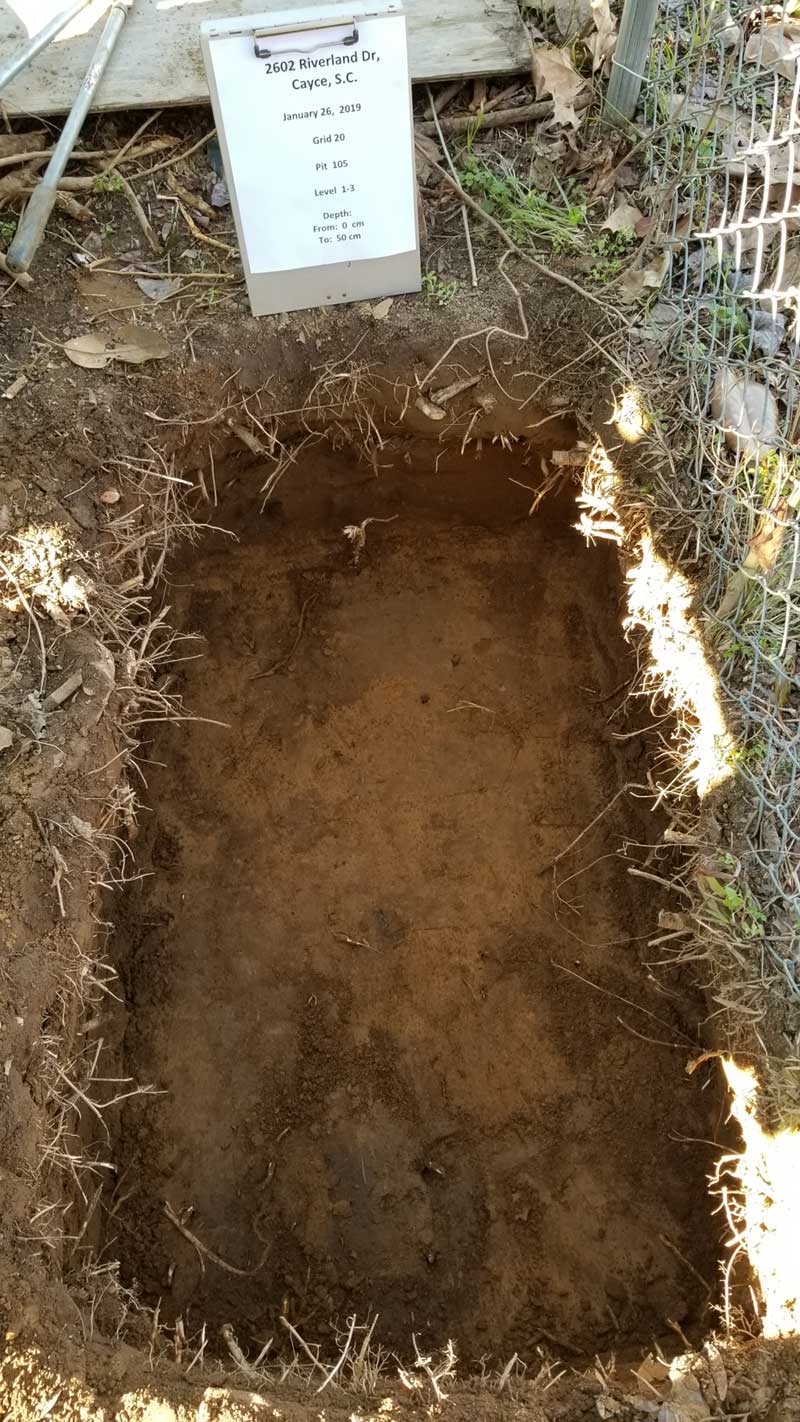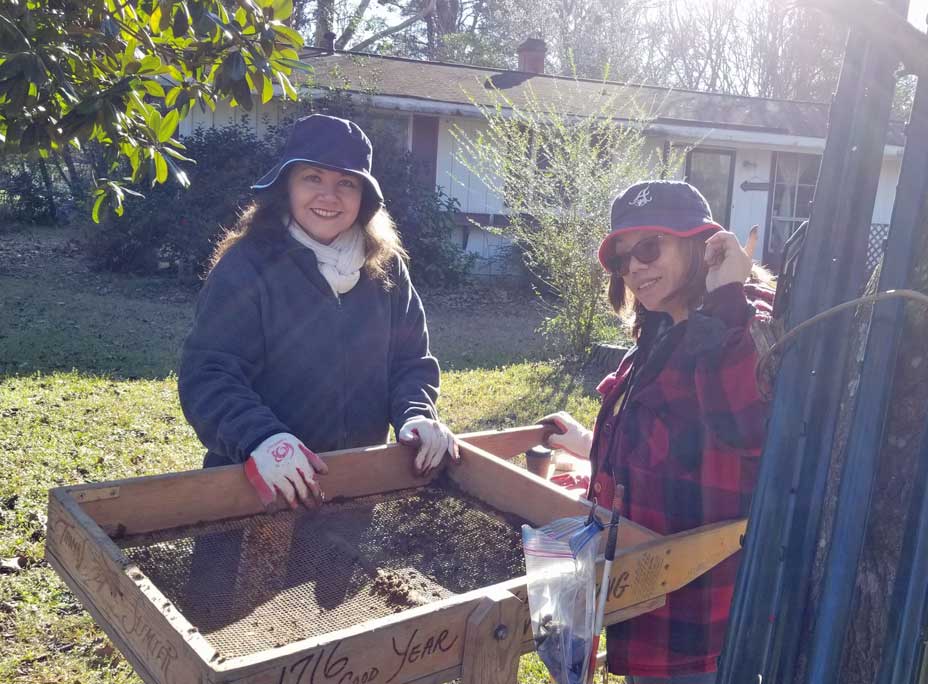Pit 105: All Levels
Completed on January 26, 2019 by Alicia Ballagh, Odess and David Brinkman. Pit 105 digging spanned several days in several different months. It was probably our most difficult pit to dig. It was excavated in the roots of a Judas tree in a 1-meter square area, but its dimensions were not a square as we tried to avoid cutting into the major roots of the tree. Trying to perform multilevel digging was not possible so the results are all given as "all levels." We did achieve the usual final depth of 50 cm. On this chilly January day, we finally completed the pit. The final numbers show that Pit 105 was the best pit we have excavated since Pit 93. It had a diverse set of 258 artifacts. This was not a surprise. It was dug in the "hot zone" in the area of the main 1785 house and storage building, which was built on top of Indian trader Thomas Brown's home site (1730-1747.) It also gave us the second-highest number of Native American artifacts. Among the most interesting finds were another lead musket/shot ball, part of a colonial period shoe buckle, and a nice set of stoneware pieces. To see other musket/shot balls found at Granby, click here. To see all the buckles found at Granby, click here. Pit 105 brings us close to the milestone of 18,000 total artifacts. We do not count obvious modern items (less than 100 years old) as artifacts. We do not count Granby brick fragments as artifacts. If we did, the total count would triple, or maybe quadruple. A rough breakdown of the total artifacts found at Granby shows that about 75% of the objects are Granby period (1750-1830). 20% of the artifacts are Thomas Brown period (1730-1747), and 3.5% are Native American (~8000 B.C. to 1760).
Pit 105: All Levels produced: Granby period: 57 kitchen pottery, 18 stoneware, 21 kitchen glass, 45 imported English window glass, 25 nails. 25 iron piece, Colonial shoe buckle (1760-1790), .20 caliber musket/shot ball, three pipe bowl pieces, and 16 charcoal. Native American: 31 pottery, and two flint.





